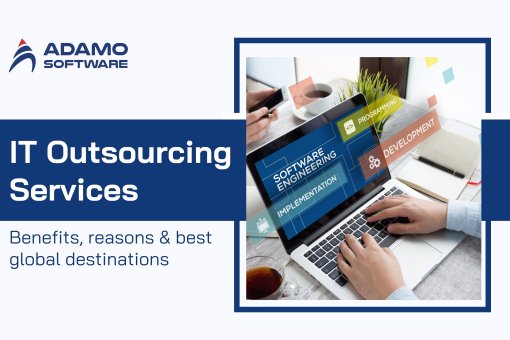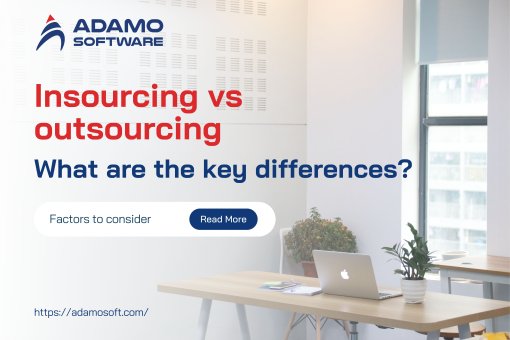Software development strategies: models and methodology

Last decade, most software development strategies relied on spontaneous exertion, that companies got struggling to deliver effective solutions follow the plan.
The software development strategies tend to be an abstract term that definitely does not have a clear understanding. Basically, it includes series of decisions related to the software development process. Accordingly, the chosen software development strategy will form how dedicated developers to design, develop, and deploy projects.
In this article, we will show you some popular concepts in software development. Besides, we will mention indicators influencing the process of selecting the right software development strategy.
The concept of software development models

Software development process
Obviously, the software development process has not claimed any common standard. Accordingly, it could be adjusted based on the nature of software development projects in Adamo to see more. Fortunately, along with the revolution of agile scrum methodology, experts believed in the influence of relevant techniques in forming a typical software development process.
Basically, modern software development companies seemingly respect Agile and Scrum methodology in saving time and money. As a result, they came up with the conclusion of standard guidelines for starters whenever they plan a project.
Step 1: Searching for software development vendor
In practice, each software development company would specialize in sets of prevalent technology. The technology concentration allows the dedicated software development team to optimize their effort and expertise. Besides, technology focus tends to be a preferred strategy to software outsourcing companies, that they can take advantage of reusable code and resources.
For instance, you can handily find a list of Laravel developers in Topdevelopers.com, which have several differences from a list of .NET developers. In practice, most software developers could deliver both mobile app development and website application development. They do limit their expertise in some industries to ensure the profound capacity in serving their clients.
At this step, you need to end up with a proper vendor which owns technology and experiences that fit with your project requirement. Accordingly, assign a fitting product owner who takes responsibility for the final decisions is inevitable. Moreover, you should consider the future usage of your product in deciding software development vendors.
Step 2: Define a clear vision for the actual product
With support from the team, your product owners need to clear three highlights:
_ Why you need the software
_ How it helps your business grow
_ The project vision for recent time and beyond
Project vision consideration might not be an easy task, that needs a typical understanding of coding and project management. In this case, you might need a consultant from your software development vendor
Step 3: Considering integration for software development strategies
We are living in a world of connection, while the internet of things (IoT) has become more popular than ever. If you build a system alone without integration with other existing software, you would be lagging behind. Product owners could suffer failure when building a single system, which cannot synchronize with others.
In this case, the software would be isolated and operated under its expectation due to the enormous volume of ancillaries required in its ecosystem. We are living in a world of connection, while the internet of things (IoT) has become more popular than ever. If you build a system alone without integration with other existing software, you would be lagging behind. Product owners could suffer failure in developing a single system, which cannot synchronize with others. In this case, the software would be isolated and operated under its expectation due to the enormous volume of ancillaries required in its ecosystem.
In modern software development practices, developers prioritize using open APIs, which is an intermediary to connect several systems and share a common resource library.
In this step, product owners are required to document the consideration among current implementation and product requirements. Hence, they would determine ways to go and what will be included in the product development process.
Step 4: Check reusable tools and code
This step closely links with the above activities that the software development team would check the available inventory and resources. If you hire an experienced vendor, which has done similar projects before, they will apply the previous tasks to your projects to save time and budget. Additionally, reusable tools are believed to not taken bugs and lag. Besides, it could also reduce the testing process.
Step 5: Decision making regarding the processing
The four above steps would provide you adequate information before any development effort has been placed. Accordingly, you have documents describing what you need and what you have in relation to the possibility of building your software solutions. Hence, at this time, you need to define clearly a list of tasks. You should make sure that what should be done first and what needs to execute later.
Our clients commonly divided their projects into small phases, started with MVP. Then, depending on customer feedback, another improved version will be developed. This strategy becomes more popular since it speeds up the time of product launching.
Step 6: Complete documents related to the product
After having a profound checklist for the upcoming project, you can finalize the software development strategies that would be suitable. Basically, strategy decisions would be placed based on project scale and scope. Commonly, the software development team will initially deliver an MVP with regularly three screens.
Software development methodology
1. Clearly identify techniques for each software development project
As mention above, you need a detailed requirement document for your project, including deadlines, technologies, and budget. In which, this information would be unchanged across the development period. Accordingly, it needs to be defined clearly with careful consideration.
2. Focus on Flexibility software development strategy
Software solutions should keep up with evolution across industries. That’s why you need to add flexibility to the development projects to make sure your software solutions will not be outdated when it finishes. However, whatever the flexible methodology applied, you should keep in mind that:
_ Keep system modifiability
_ Improve system security
_ Respect system availability
_ Improve the high performance
3. Keep an eye on industry standards
Recently, automation and mobile devices expectedly shape the future in the IT industry. Your upcoming software development strategies should not ignore those novel standards. Today is the edges of information and digital information, that the software developed should serve the real need to sustainably alive.
Software development strategy
To efficiently manage a project, the manager or development team must select the software development strategy that will be most effective for the project: Agile, Waterfall or DevOps.

Waterfall
When the dedicated development team decides to apply the Waterfall strategy, they will strictly follow a detailed plan. Whereby every step has been clarified with no uncertainties. In Waterfall strategies, developers rarely change any minor part of the software development plan, that they follow step-by-step execution. Accordingly, the current task has to be done, before the next starting.
Unfortunately, the waterfall software development strategy currently is no longer popular that most dedicated developers believed it is outdated. However, it also owns undeniable advantages in software development, which admired the idea of equal priority among project parts.
Agile
Currently, Agile software development as the dominant methodology has commonly applied in several offshore software outsourcing companies. Undeniable, Agile methodology brings immense benefits, but it requires the right direction in implementation.
For using an agile development strategy, you need a proficient team with skilled developers who indicate their technology proficiency. The concept of agile development strategy refers to the term agility or rapid software development. It means using Agile development strategy, experience and expertise are extremely important. Accordingly, the more skills developers have, the faster and more undoubtedly the projects adopt.
With agile development strategy, you can steadily change or combine within three core strategies:
_ Agile Scrum with separated phases
_ Kanban with task board
_ Informal conversation with instant messaging apps.
DevOps in software development strategies
Besides interaction among IT infrastructure and dedicated developers, DevOps tend to be an advanced version of Agile software development. DevOps was born to help developers break the technological limitation. In practice, leveraging DevOps helps developers in applying automation in the software development process, which bring tons of benefits:
_ Rapid bug detects and fixing
_ Improve software quality
_ Cut down launching time
_ Improve client satisfaction
_ Speed up productivity and teamwork proficiency
But how can DevOps solve all the above list? The DevOps backbone strategy focuses on individuals, who can be advanced in many positions and expertise. DevOps strategy admits the continuous release and process, which limit the painless for the development team.
System development strategies
Developing a whole system is obviously more challenging than building a small solution. Fortunately, the fundamental root of system development strategies starts with the above agile development strategy.
Lean software development
For enterprise software development, the Lean strategy shows its benefits in boosting speed and productivity. To apply this strategy, software development companies need to have enough experience or input, which steadily meets client requirements.
Crystal development strategy
The heart of crystal strategy refers to concentrate on the development time. Basically, it leverages versatile methods to deliver the system as soon as possible.
Dynamic system delivery method:
It is commonly used for iterative projects. Accordingly, the concept of dynamic system delivery methodology automatically applies broadly. In which this method consists of several repeat tasks or similar parts. Using this strategy, companies could steadily scale the development process.
Feature-driven development
This strategy admires a client-centric approach that the software development requirement would focus on describing features as the primary source for developers. In this strategy, clients might be lower the constraints of technologies and methodologies imposing on the software development team. They only focus on the feature performance, assuring the solution having adequate features required and smooth performance, the project is seemingly thriving.











